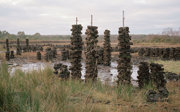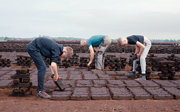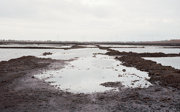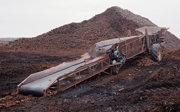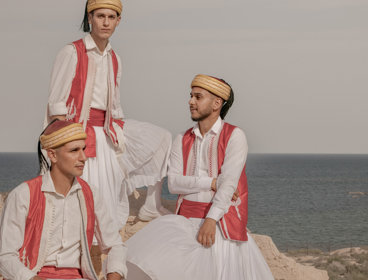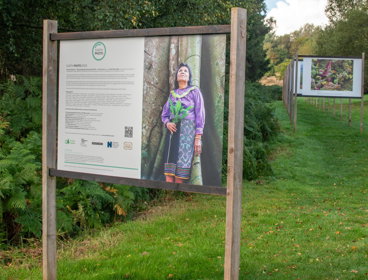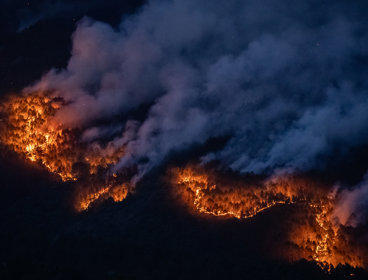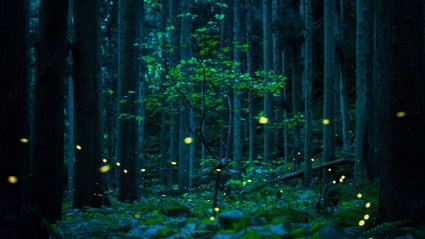
Earth Photo 2025
Out of over 1,582 entries, a judging panel made up of experts from the fields of photography, film, geography and environment selected the Earth Photo 2025 award winners.
Earth Photo 2025 showcases photos and videos that convey the world around us and will make viewers think differently, capturing nature, people, place and space, forests, the land and seascapes, and the varied impacts of, and adaptations to, climate change.
As the profound changes our planet is under come ever closer in our awareness and our lives, the winning images and films from this year’s Earth Photo show these shifts starkly, creatively and beautifully.Mike Seddon, Forestry England Chief Executive
Winner Earth Photo 2025
The Earth Photo 2025 Award, worth £1,000, goes to Lorenzo Poli for his entry, Autophagy.
This impressive, black-and-white photograph was taken at the Chuquicamata mine in Chile, the second-largest open-pit copper mine in the world by excavated volume, and one of the deepest, plunging nearly 1,000 metres (3,300 feet) into the Earth.
Capturing an abandoned miners’ town and cemetery gradually being subsumed by mineral ore extraction, the image documents the "gridded impermanence of extractive cycles, overpowering life and death", according to Lorenzo Poli.

Taken from above, the photograph shows the vastness of Chuquicamata, and the marks we make on the natural world.
The piece highlights the "unrelenting expansion of extractive endeavours”, telling a story of unsustainable mining practices fuelled by increased global demand for copper "driven by its role as a critical primary element in the transition to renewable energy".
Climate of Change Award
The Royal Geographical Society - Climate of Change Award, worth £500 for a project that explores the impacts of climate change upon people, environments and wildlife, goes to Liam Man for his piece Carcass of the Ice Beast.
Carcass of the Ice Beast, Image 3 from The Icebreaker Project, is a photograph taken of the Rhone Glacier. In 2009, thermally reflective blankets were used to slow its melting, covering five acres to deflect infrared radiation.
“Today, these coverings hang in tatters, like the torn skin of a dying giant”, Liam Man explains. By anthropomorphising the glacier, the photographer invites us to “bear witness to the cryosphere’s beauty and its vulnerability”.
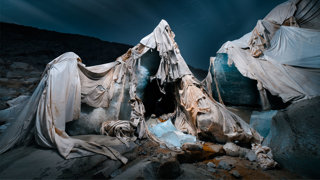
The piece acts as a “tribute to human effort and a sobering reminder of its limits. Despite the dedication of a few, their interventions could not halt the glacier’s retreat.”
The message of the wounded glacial scene becomes clear:
Climate change cannot be solved through isolated actions alone.Liam Man
Forest Ecosystem Award
The Forestry England - Forest Ecosystem Award, worth £500, selected by Forestry England, goes to Mateo Borrero for Waterline.
In the Peruvian Amazon rainforest, the rainy season historically hits the region between April and May, marking the area’s trees with waterlines showing how high the flood waters rise annually.
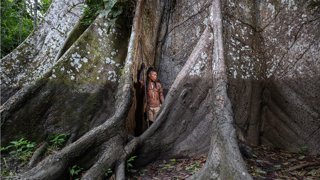
In this image, a Ticuna man stands beside a vast 500-year-old Celiba tree in the rainforest, one which has clearly seen hundreds of rainy seasons, as denoted by its waterline at the man’s shoulders, which cuts the image into two distinct planes.
"This photograph, taken in May 2024, shows that the water level should be at its maximum; however, rainfall was scarce and, by the peak of the rainy season, non-existent," Mateo Borrero explained.
Borrero’s piece highlights the changes affecting Peruvian Amazonian communities, and the shared plight of those inhabiting the region.
Moving Image Award
The Earth Photo 2025 Moving Image Award, worth £500 goes to Mohammad Rakibul Hasan and Fabeha Monir, for their short film The Taste of Honey.
In the Sundarbans, the world’s largest mangrove forest, stretching across India and Bangladesh, Shorbanu Khatun lives with a legacy of loss. After her husband was killed by a tiger, she became one of the region’s many 'tiger widows': women marginalised by their communities and unjustly blamed for misfortune.

Climate change has compounded her struggle. Rising sea levels, saltwater intrusion, and increasingly violent cyclones have made farming nearly impossible and freshwater a scarcity. To support her children, Shorbanu enters the treacherous forest to harvest honey and Gol leaves—work that risks deadly encounters with wild animals, pirates, and financial ruin.
Through striking imagery and quiet intensity, The Taste of Honey reveals the everyday courage of women like Shorbanu. It is a story of resilience, sisterhood, and spiritual connection to the forest. As traditional ways of life disappear, the film speaks to the urgent need for climate justice and the protection of both ecosystems and the people who depend on them.
David Wolf Kaye Future Potential Awards (two awards)
A photographer and a filmmaker aged 25 or under receive the David Wolf Kaye Future Potential Awards, a cash prize of £250 towards the cost of their next project, and mentoring by a leading photographer or filmmaker.
Award for photography
Issam Chorrib, a 24-year old from Morocco, is awarded the David Wolf Kaye Future Potential Award for his photograph La Hepica - Consumed Living Spaces.
Issam Chorrib’s image taken in Larache, Morocco, captures a turning point where nature and human impact collide: a forest once used for leisure and reflection, now consumed by fire.
Part of his series La Hepica: Consumed Living Spaces, "the image underscores the increasing fragility of ecosystems in the face of climate change", Issam Chorrib explained. Prolonged droughts and environmental mismanagement have made places like La Hepica increasingly vulnerable to wildfire.
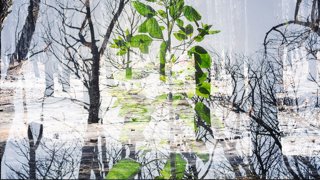
Once a sanctuary of biodiversity and calm, its charred remains now stand as a stark reminder of what we risk losing.Issam Chorrib
Chorrib’s work offers a visual reckoning from the rich, multi-layered scene, inviting viewers to confront humanity’s role in ecological degradation and calling for urgent, collective action to safeguard what remains.
Award for film
The David Wolf Kaye Future Potential Award, awarded to a filmmaker aged 25 or under, goes to Miranda Barton for her work Soft Fascination. The prize includes £250 towards the cost of her next project and mentoring by a leading filmmaker.
Soft Fascination invites viewers into a state of gentle, immersive attention: what environmental psychologist Stephen Kaplan called 'soft fascination'. Through underwater photography, Barton explores the emotional and sensory dimensions of being submerged, drawing on personal encounters with water across swimming pools, rivers in the South of France, and the beaches of Salcombe in South Devon, where this project began.
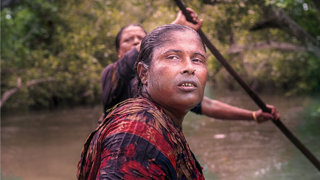
Using an Olympus TG-6, Barton captures the subtle transition from “rational calm to creative inspiration” that often occurs beneath the surface.
The resulting images are infused with memory and sensation, reflecting both the visual poetry of underwater light and the known neurological benefits of immersion, from increased dopamine and serotonin to a sense of wellbeing.
Her work not only reflects the underwater experience: according to Miranda Barton, it seeks to “communicate its restorative power to the viewer.”
Photoworks Digital Residency Award
The Photoworks Digital Residency Award worth £400 goes to Shane Hynan for his work Beneath | Beofhód (2018–present). Hynan will have the opportunity to work with Photoworks to present his work in a variety of ways online.
Hynan has also received the Sidney Nolan Trust Residency Prize, a two-week residency at Nolan’s former home, The Rodd.
An Irish term meaning 'life beneath the sod', Beneath | Beofhód, "evokes the deep-rooted reverence for the land in Celtic culture", according to photographer Shane Hynan.
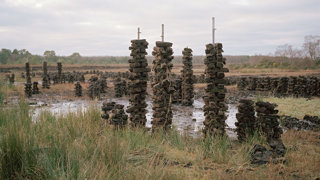
Beneath | Beofhód invites viewers to consider the bog not only as a living archive of history but as a vital site for climate action and cultural renewal in the present.Shane Hynan
Using a combination of "topographical mapping and metaphorical exploration", Hynan’s project reflects on the legacy of industrial peat harvesting, and recent tensions between traditional turf cutting practices and the need to restore and protect fragile peatland ecosystems.
"Documenting the shift from large-scale extraction to conservation efforts and the establishment of renewable energy sites, the work reveals how communities are redefining their relationship with the bog."
The New Scientist Editors Award (two awards)
For a photographer
The New Scientist Editors Award, for a photographer with the potential of an image spread in the Aperture section of the magazine, goes to Vivian Wan, who will also receive mentoring with Tim Boddy, Picture Editor, New Scientist.
For centuries, the Klamath Basin has been the cultural and ecological heart of the Yurok Tribe, who identify as "Indians of the river and coast." The basin’s waters have long sustained fishing, eel hunting, and above all, the sacred salmon—central to Yurok spirituality, identity, and livelihood.
Yet decades of "colonization, land dispossession, and environmental degradation have severely impacted this once-thriving ecosystem."
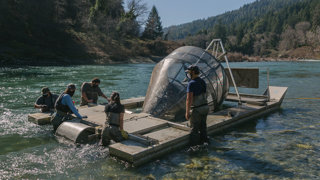
On the Trinity River in Willow Creek, California, Yurok Tribal members and biologists Oshun O'Rourk and Yadao Inong, along with technicians, install rotary screw traps: specialised devices used to catch live fish for annual disease monitoring and to track migration patterns.
The Yurok Tribal Fisheries Program leads efforts to restore the basin’s health, aiming to heal both land and community. Wan’s photographic work honours this process of reclamation and resilience, capturing the intersection of Indigenous knowledge, ecological science, and the enduring fight for justice and cultural survival.
For a filmmaker
The New Scientist Editors Award, for a filmmaker with the potential for an online video article goes to Adam Sebire, who will receive mentoring with David Stock, Head of Editorial Video, New Scientist.
In West Greenland, above the Arctic Circle at 70.7ºN, sea ice, once central to Inuit survival and culture, is disappearing at an alarming rate. Filmed in February and March 2024, Sikorluppoq documents a time of crisis, when "just one month of the winter season offered solid enough ice for traditional activities such as fishing, hunting, and dog-sledding."
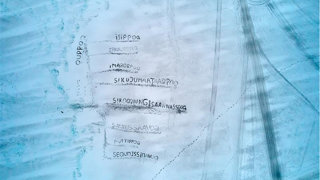
The film takes its name from the Kalaallisut word Sikorluppoq, meaning 'the sea ice is bad': too thin to be safe. Children from the Uummannaq Children’s Home trace this word into the snow with hunters’ tools, marking both a warning and a mourning.
Where once dog-sleds connected isolated settlements across vast, frozen fjords, rising temperatures and encroaching waves now disrupt this way of life.
As the Arctic Ocean faces ice-free summers as early as 2030, Sikorluppoq bears witness to a community on the frontline of climate collapse, and asks whether the vital lifeline of winter sea ice can be saved for future generations.
In a world where the climate crisis often feels distant, overwhelming or abstract, filmmakers and photographers bring us face to face with its reality. [...] I’m continually struck by how the works confront us with the urgency of the climate challenges. They do more than document, they bear witness. In every frame, there is a call, not just to look, but to respond.Louise Fedotov-Clements
Stay in the loop about Earth Photo
To keep up to date with the latest news and announcements, follow us on social media and use the hashtag #EarthPhoto.
Earth Photo 2025 exhibitions
The Earth Photo photography exhibition will be hosted at the Royal Geographical Society in London, at seven Forestry England forests, in 10 National Trust locations, and at the Sidney Nolan Trust.
Find your nearest Earth Photo 2025 exhibition
